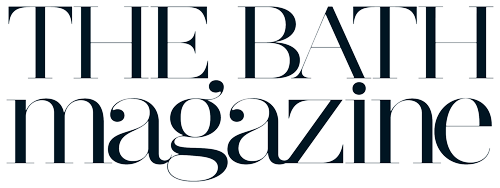As a singer, there’s nothing Barbara Hannigan can’t do, and as a conductor she drives straight to the places that other musicians wouldn’t dare. Experience her doing both with the London Symphony Orchestra at Bath Forum, says Emma Clegg.
There is a 2015 video of Barbara Hannigan on YouTube. It is an excerpt from a concert version of the opera Mysteries of the Macabre by György Ligeti with the London Symphony Orchestra at The Barbican, conducted by Sir Simon Rattle. Ligeti was an avant-garde composer; and this is an avant-garde performance. Described by one YouTuber as “The best entrance anyone has made to The Barbican stage in many a long year”, we see Hannigan dressed in a schoolgirl’s outfit, a tartan mini skirt, white socks, high heels, her hair in bunches, chewing gum, strolling flamboyantly towards Sir Simon. Chewing at length while surveying the audience, she then thrusts her gum into his outstretched palm … and, in her own time, starts to sing. This is not singing as we might know it, but powerful, electric, unexpected. Described by Ligeti as “an anti anti opera”, the score “is a riot of quotations and pastiche and includes a percussion section that includes ‘a duck-quacker’, a wind machine and a saucepan” (The Guardian). The excerpt went viral on YouTube, and “became a gateway for a lot of people into seeing what modern music is,” explains Hannigan. (Search YouTube with ‘Ligeti’ and ‘Hannigan’ for the full experience.)
Canadian soprano and conductor Barbara Hannigan is not a conventional sort of musician, you see. She has built an international career as an innovative performer, first as a singer and subsequently (and simultaneously) as a conductor. She has performed world premières by an international selection of composers, while her more traditional opera repertoire includes productions of Alban Berg’s Lulu at La Monnaie and the Hamburg Staatsoper, Francis Poulenc’s La Voix Humaine at Paris’ Opera Garnier, and Debussy’s Melisande for both Aix-en-Provence and the Ruhrtriennale Festivals.
Known for the first 20 years of her career as an innovative and highly respected soprano, Hannigan has always been committed to new performances of contemporary music. It wasn’t until she was 41, however, that she turned to conducting. “I didn’t make a career change to become a conductor – I simply prepared for one engagement which led to others. I took one risk, let’s say,” says Hannigan. Her conducting debut was at the Théâtre du Châtelet in Paris, playing works of Ligaty and Stravinsky: “It was organised by a colleague who had suggested that I should try conducting, someone who believed that this was part of me. I wouldn’t have taken on the engagement if I didn’t believe that there was something worth exploring. It is a pretty big place to make a debut; on the other hand it was a controlled risk.
“I’m glad that I didn’t conduct until I was 40 because there are a lot of extra musical things that go along with conducting, which I’m happy that I encountered at a slightly more mature age, after having had, and then continuing to have, a career as a singer.”
Singing and conducting simultaneously? That sounds a challenge, because conductors work ahead of the orchestra, before the beat, not on it. “As a conductor you are always a little bit ahead and thinking ahead,” says Hannigan. “But actually I’m also like that as a singer – I’m always a little bit ahead in my brain, and usually on the front of the beat, so that’s already part of my musical DNA. But for most of the programmes I do I’m just conducting.
“What the audience sees is only the product of our days of rehearsal. They don’t see the process, which is very different, much more hands-on than the product. In the rehearsals from the first day I’m facing the orchestra and I’m really conducting and singing and showing them what I want. Usually part way through that rehearsal I pull back, I change the equilibrium of responsibility, I have them playing more like chamber musicians, so they are doing more, I am doing less. Around the second day I turn my back on them, literally, training them, facing out, saying how much more responsibility can you take, where does the attention go, who has the main voice at this point? Is it the trumpet, is it the first violin, is it the cello section? So I’m making everyone aware of where the focus needs to go.”
Hannigan has performed an impressive 85 world première performances in her career, the first at the age of 17. “Every year I give a few more world premières and it’s just part of my upbringing to work with living composers,” she says.
“Nobody thinks of me as a traditional musician, but funnily enough I’m following the tradition because in the Romantic period and the pre Romantic period world premières were commonplace. Composers were expected to produce new material all the time – Haydn wrote 104 symphonies. People didn’t want to hear the same thing again, so performers were constantly giving world premières and singers were clamouring to be in Rossini’s or Verdi’s new opera.”
Hannigan is committed to supporting younger generations of musicians. She created the mentoring initiative Equilibrium Young Artists in 2017 and in 2020 she created Momentum: our Future Now, which encourages other leading artists and organisations to support and mentor younger professional musicians.
“Both initiatives are for young professionals, young musicians who have more or less finished their training and who are in that particular stage where all of a sudden you are professional but you don’t have a lot of experience, and therefore you don’t necessarily have the tools or the skill set to deal with all the things that are going to come at you.
“There are so many things to deal with – criticism, social media, managers, auditions, difficult colleagues, even basic things like your health and wellbeing – it’s such a lot, and in college you just learn how to sing and how to perform.”
One of the issues that came up with Equilibrium – which included a series of guest speakers, conductors, singers, composers and managers coming in to talk about their own experiences – was loneliness: “Loneliness and isolation came up with every major artist who appeared. I’ve certainly experienced that as an international artist. So it was very moving to see these young people seeing their idols coming in and saying that, telling them to prepare themselves and find a way to handle this.”
Barbara Hannigan is appearing as both conductor and vocalist with the London Symphony Orchestra in Bath on 13 March, performing L’Ascension by Olivier Messiaen and Symphony No. 4 by Gustav Mahler. Both pieces express versions of heaven, but from different perspectives.
“The Messiaen piece is inspired by biblical texts and it’s a very spiritual work, with a sublime ecstasy and purity. Mahler’s 4th Symphony doesn’t go to heaven; it refers to the heavenly life in the fourth movement, but it’s from the point of view of a child who has just died of hunger, so it’s a social commentary. The child (the soprano) sings about how amazing it is in heaven, how there is so much food, everything you want, and everything is there for joy. I’m convinced that this is the child’s imagination of what it must be like in heaven.”
Hannigan explains that her approach as conductor is to “try to get deeply inside the music in the way I believe the composer wanted”. Including two musical visions of heaven, this concert is likely to be charged with wonder.
Barbara Hannigan performs with the London Symphony Orchestra at The Forum Bath on 13 March at 7pm. £15–£48 | bathforum.co.uk
Featured image credit: Marco Borggreve


